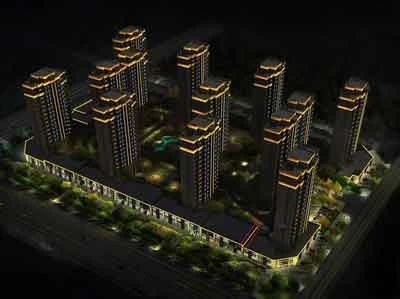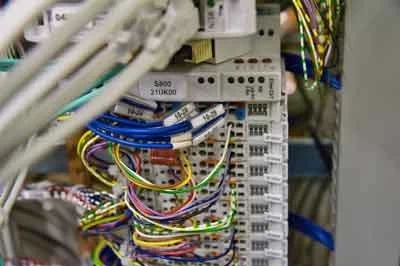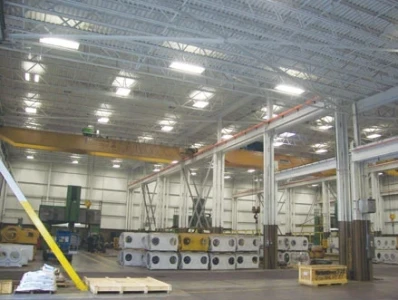Overcoming Interoperability and Data Sharing Challenges in BAS

Building Automation Systems (BAS) offer a compelling proposition for building managers, promising energy savings, streamlined operations, and improved occupant comfort. However, a significant challenge hindering the full potential of BAS lies in the lack of interoperability between different systems and the complexities associated with data sharing. This article explores the challenges of interoperability in BAS, examines the consequences of siloed data, and discusses potential solutions towards creating a more integrated building automation ecosystem.
The Interoperability Challenge: A Tower of Babel in Building Automation
Interoperability refers to the ability of different devices and systems to communicate and exchange data seamlessly. In the context of BAS, interoperability challenges arise from several factors:
Proprietary Communication Protocols: Many BAS manufacturers utilize proprietary communication protocols, creating closed systems that struggle to communicate with devices or systems from other vendors. This necessitates complex workarounds or gateways to enable data exchange, increasing cost and complexity.
Lack of Standardized Data Models: BAS data can encompass diverse parameters like temperature, humidity, energy consumption, and occupancy levels. The absence of standardized data models makes it difficult for different systems to interpret and utilize data consistently. This can lead to data inconsistencies and hinder comprehensive building analytics.
Legacy Equipment and Systems: Many buildings contain a mix of older, legacy BAS and newer systems. Integrating these disparate systems can be challenging due to differences in communication protocols and data formats.
The Consequences of Siloed Data: A Fragmented View of Building Performance
Limited interoperability and siloed data can have several negative consequences:
Reduced Operational Efficiency: Building managers rely on a comprehensive view of building performance to optimize operations. Disparate data sources from incompatible BAS hinder effective energy management, fault detection, and preventive maintenance strategies.
Limited Building Analytics: The true potential of BAS lies in leveraging data for advanced analytics. Siloed data sets from incompatible systems make it difficult to correlate trends, identify patterns, and gain actionable insights to optimize building performance.
Increased System Integration Costs: Workarounds like gateways or custom integrations to achieve communication between disparate systems can be expensive and time-consuming to implement. These additional costs can erode the potential cost savings and ROI benefits of BAS implementation.
Maintenance Challenges: Managing a variety of incompatible BAS platforms can be complex for building maintenance staff. Troubleshooting issues and maintaining system functionality requires specialized knowledge for each system, increasing maintenance time and costs.
Building Bridges: Solutions for Enhanced Interoperability and Data Sharing
Several solutions can help overcome interoperability challenges and create a more integrated BAS ecosystem:
Open Communication Protocols: The adoption of open communication protocols like BACnet or Modbus enables broader interoperability. These standards allow devices and systems from different manufacturers to communicate regardless of brand, facilitating seamless data exchange.
Standardized Data Models: Implementing standardized data models like Haystack or Project Haystack provides a common language for BAS data. This ensures consistent data representation across different systems, streamlining data analysis and facilitating integration with building analytics platforms.
Integration Platforms and Gateways: Integration platforms and gateways can act as intermediaries between disparate systems. These platforms translate data formats and protocols, enabling communication between incompatible BAS and facilitating data exchange.
Cloud-Based BAS Solutions: Cloud-based BAS offer inherent interoperability advantages. Data resides in a central cloud platform, accessible by authorized users regardless of location or device. This cloud-based approach simplifies data access and fosters collaboration between different stakeholders involved in building management.
Building Information Modeling (BIM): BIM can play a crucial role in promoting interoperability. BIM provides a digital model of the building that incorporates information on various building systems, including automation infrastructure. This centralized repository can facilitate communication and data exchange throughout the building lifecycle, promoting interoperability during design, construction, and operation phases.
The Road to a Unified Ecosystem: Embracing Collaboration and Open Standards
Creating a truly integrated building automation ecosystem requires collaboration between various stakeholders:
Building Owners and Managers: Building owners and managers should prioritize open standards and interoperable systems when specifying BAS requirements. This ensures flexibility and future-proofs the building for potential upgrades or integration with new technologies.
BAS Manufacturers: Manufacturers have a responsibility to develop systems that adhere to open communication protocols and standardized data models. This fosters interoperability and simplifies integration with third-party systems and analytics platforms.
Standards Development Organizations: Organizations like ASHRAE and BACnet International play a critical role in developing and promoting open standards for communication protocols and data models. Continued development and adoption of these standards are essential for achieving widespread interoperability within the BAS industry.
System Integrators: System integrators play a vital role in designing and implementing BAS solutions. Their expertise in integrating different systems and leveraging integration platforms can bridge the gap between disparate technologies and facilitate seamless data exchange.
Systems for Smarter Buildings
The vision for the future of building automation lies in a seamlessly integrated ecosystem where various systems work in concert to optimize building performance. By prioritizing open communication protocols, standardized data models, and collaborative efforts amongst stakeholders, we can overcome interoperability challenges and create a truly intelligent and connected building environment. This paves the way for:
Enhanced Building Management: Building managers will have access to a unified view of building performance data, enabling them to make data-driven decisions regarding energy consumption, maintenance schedules, and space utilization, ultimately streamlining building operations.
Advanced Building Analytics: The ability to combine and analyze data from multiple BAS effortlessly fosters advanced building analytics. This can provide valuable insights into building performance trends, identify areas for improvement, and facilitate predictive maintenance strategies.
Improved Occupant Comfort and Sustainability: Interoperability paves the way for occupant-centric BAS features like personalized lighting and temperature controls. Additionally, data-driven insights gleaned from integrated systems can inform strategies for optimizing energy efficiency and minimizing a building's environmental footprint.
Investing in interoperability is no longer an option but a necessity for unlocking the full potential of Building Automation Systems. By embracing open standards, collaborating across stakeholder groups, and leveraging technological advancements, we can create a future where BAS act as the cornerstone of intelligent buildings, fostering efficiency, sustainability, and a more comfortable environment for occupants.









